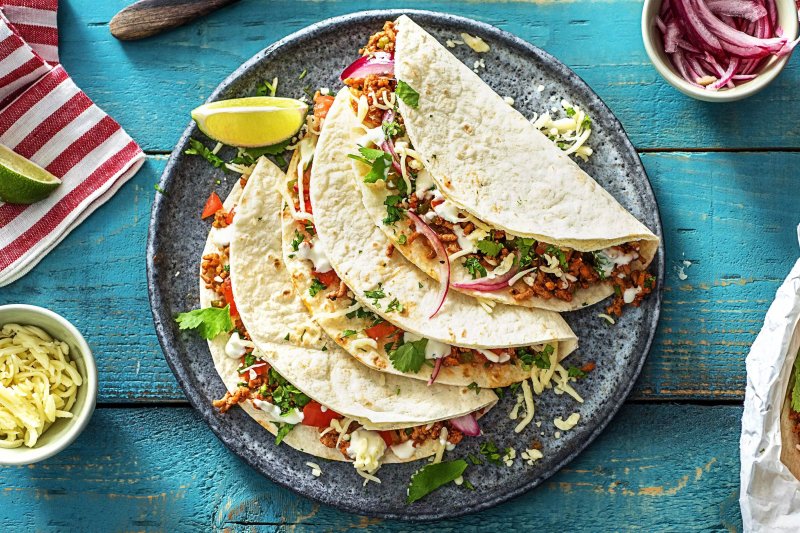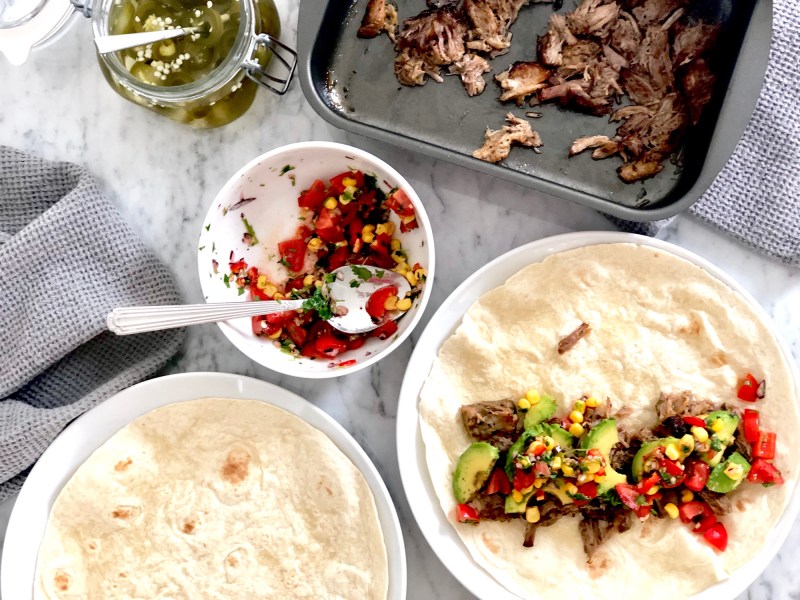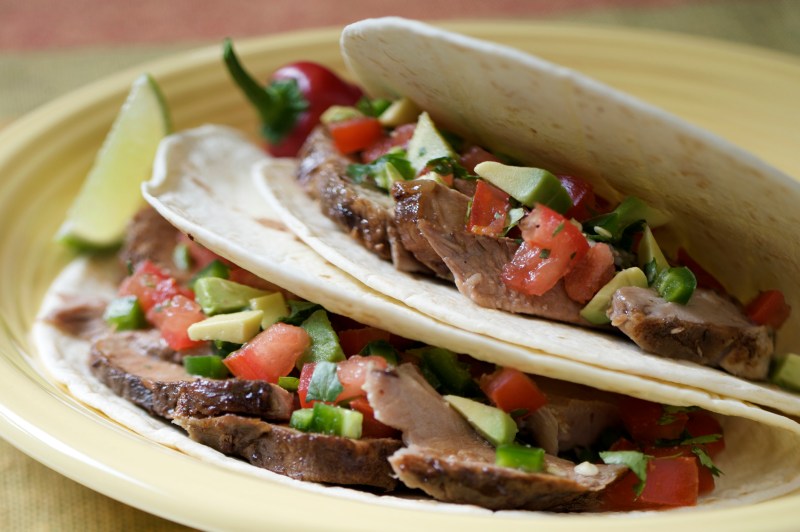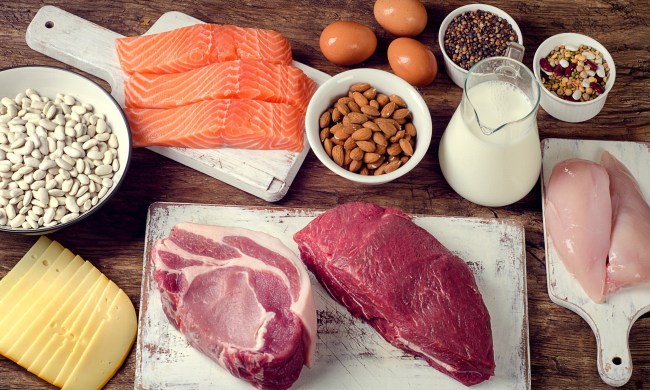
If you’ve ever had street tacos, whether from an actual street vendor or an upscale restaurant, you’ve likely had carnitas — whether you knew it or not. Carnitas grew in popularity through Mexican street tacos, but people use it in various dishes, from nachos to chimichangas. Carnitas are most commonly known to be pork, but it can really be any sort of meat cooked in its own fat (confit). The word carnitas in Spanish translates to “little meats.”
You can learn how to make carnitas at home — it isn’t difficult. However, it’s not just a matter of throwing a chunk of pork in a pot, and then it turns into delicious carnitas. There are some crucial steps to cooking the perfect batch of carnitas. That’s why we reached out to an expert in Mexican cuisine.
Chef de Cuisine Jesús “Chuy” Cervantes of the acclaimed Damian restaurant in downtown Los Angeles has stepped up to give us pointers on making the perfect carnitas. He will also clear up some common misconceptions about the beloved Mexican dish. Also, stick around until the end for his special recipe.
What you need to make carnitas

Here is everything you need to make the perfect carnitas: the tools, the meat, and the method. Then you can enjoy the magic of your own making.
The tools
To cook carnitas, you’ll need a Dutch oven, slow cooker, or roasting pan — basically something you can cook the meat in at low temperature for a long time. If you’re using a slow cooker, you’ll need a large cast-iron pan, flat top, or electric skillet to sear the meat in at high temperature before the slow cook.
If you’re using a Dutch oven or you’re roasting, you can sear and slow cook. This is the preferred method so you can deglaze the cooking surface after searing for maximum flavor. You’ll also need your essential cooking equipment like a knife and cutting board.
The meat
Chef Cervantes insists that to have good carnitas, you need good pork. That’s why you should always go to a local butcher or grocer that you trust to sell quality meat. For which cut of pork you use, you have some options.
Most commonly, carnitas are made from the shoulder cut of pork known as either pork Boston butt, shoulder, or picnic cut. The names range from the location on the shoulder (picnic lower and Boston butt higher). Both cuts are relatively inexpensive and have high fat content. Hence, why they’re so great for the confit method. Pork collar is also often used for carnitas. It contains a portion of the jowl, which is used in more gourmet food items. This drives up the price a little, but it is still excellent for carnitas.
A less common cut, and one that Chef Cervantes prefers, is pork belly. It’s from the belly (obviously) and is a very fatty cut with exceptionally tender meat. Cure it, smoke it, and you’ve got yourself bacon. You’ll be paying much more for belly than you would shoulder cuts, but it’s worth it in the end.
“I really like belly for carnitas. You get the soft meat that can easily crisp up with a great amount of flavorful fat. Once it’s cooked, you can take the skin off the belly, dry it out and fry it for chicharron.”
The method
Some people like to put a rub on carnitas before cooking, but this step is unnecessary and is mostly superficial flavor enhancement since the cut of pork is so large. What really makes the flavor are the ingredients you add to the wet braise. You’ll want to add some aromatic vegetables like onions, garlic, or shallots. Also, to balance the overwhelmingly savory and salty flavor of pork, you’ll want to balance it out by adding something sweet to the confit mixture. A common ingredient used to do this is cola. People also use fruit juice, condensed milk, and evaporated milk.
As mentioned before, the first step in making carnitas is to sear the meat to trap in all the moisture while it slow cooks. Cut up the meat into more manageable chunks, usually in fourths or eights, depending on the size. Sear all sides of the meat inside the roasting pan. After searing, remove the meat from the pan and saute your aromatics in the leftover fat until slightly browned. Then, deglaze the pan with stock or fruit juice to capture more flavor.
At this point, you’ll return the meat to the pan and add your other ingredients to the braising liquid. You don’t want to add so much liquid in this step that the pork is submerged — just enough so there are 2-3 inches of liquid on the bottom. As the pork cooks, it will release more fat and absorb the braising liquid. That’s where you get your flavor. It’s best to cover your pan with foil so that less air circulates throughout.
Pro tip: Use heavy-duty foil, so it doesn’t get stuck to the fatty parts of the pork. Cheap foil tends to do that.
Once covered, you’ll cook your pork for 3 hours or so or until the meat easily comes apart with a fork. If you prefer a bit of crispiness in your carnitas, return to the oven uncovered and cook at 400 degrees Fahrenheit for around 15 minutes. Once done, let your carnitas cool and serve with your favorite sides. Whether you’re eating carnitas in tacos or nachos, pickled veggies, fresh onions, jalapenos, and salsa are all great options.
Tips from Chef Cervantes

These tips will help you perfect your homemade carnitas.
- While cooked in fat and often made from fatty cuts of meat, carnitas should not be greasy. If cooked correctly, the moisture from the pork should almost emulsify with the fat as you’re chopping and preparing tacos.
- Reserve your carnitas fat! You can use it to make your next batch of carnitas to make them even more flavorful.
- Never forget to use good tortillas! I think people often think if the filling is good, you’ve got a good taco.
- If you’re looking for a pork substitute when making carnitas, try using a fatty fish like albacore or opa. I find it an incredible replacement for pork, served just as you would with plenty of tortillas and salsas.
Chef Chuy Cervantes’s carnitas

Without further ado, here is the best carnitas recipe from our expert, Chef Chuy Cervantes.
Ingredients
- 5 pounds pork shoulder and belly
- 2 pounds rendered pork fat (if unavailable, use lard for your first batch)
- Four oranges
- 4 whole garlic heads
- 4 white onions
- 2 cans Coca-Cola
- 4 ounces sweet condensed milk
- 6 ounces evaporated milk
- 10 pieces Allspice
- 12 pieces bay leaves
- Salt to taste
Method
- Cut the pork into large pieces, about 8 ounces each.
- In a deep, hot roasting pan, sear off the pieces of pork until lightly browned, using about a tablespoon of fat per piece of pork. Remove from the pan.
- In the same pan, sweat the onions (chopped into large chunks) and garlic (sliced in half) until lightly browned.
- Add the Allspice and bay leaves to toast until fragrant.
- Douglas the entire pan by squeezing the juice of the oranges.
- Add in the peels of one orange, the Coca-Cola, sweet condensed milk, and the evaporated milk.
- Add the pieces of pork back into the pan and add the remaining pork fat.
- Cover the pan with a lid or foil and place in a preheated 275-degree Fahrenheit oven for 3 hours or until fork tender.
- Then, turn the oven up to 400 degrees Fahrenheit for 15 minutes to crisp up the pork a bit.
- Remove the pork from its cooking fat and chop or pull it into desired sizes.
- Serve with tortillas, chopped onions, cilantro, and salsa.
What can you eat with carnitas?

Beyond the tortillas, chopped onions, cilantro, and salsa, there are other delicious options to pair with your carnitas. You can enjoy Spanish rice, refried beans, or black beans. The refried beans add a creamy and protein-rich element to the meal. Have the ever-popular guacamole and tortilla chips, or for a light and refreshing addition, a simple salad with lime vinaigrette will cut through the richness of the carnitas. For something a little unique, pickled vegetables, like onions, jalapenos, or carrots, add a tangy element.



